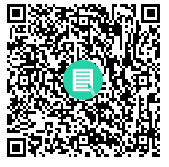2020年公共英语二级阅读理解试题二
来源 :华课网校 2019-11-22
中Passage 1
While famous foreign architects are invited to lead the designs of landmark buildings in China such as the new CCTV tower and the National Center for the Performing Arts,many excellent Chinese architects are making great efforts to take the center stage.
Their efforts have been proven fruitful.Wang Shu,a 49-year-old Chinese architect,won the 2012 Pritzker Architecture Prize—which is often referred to as the Nobel Prize in architecture—on February 28.He is the first Chinese citizen to win this award.
Wang serves as head of the Architecture Department at the China Academy of Art(CAA).His office is located at the Xiangshan campus(校园)of the university in Hangzhou,Zhejiang Province.Many buildings on the campus are his original creations.
The style of the campus is quite different from that of most Chinese universities.Many visitors were amazed by the complex architectural space and abundant building types.The curves(曲线)of the buildings perfectly match the rise and fall of hills,forming a unique view.
Wang collected more than 7 million abandoned bricks of different ages.He asked the workers to use traditional techniques to make the bricks into walls,roofs and corridors.This creation attracted a lot of attention thanks to its mixture of modern and traditional Chinese elements(元素).
Wang’s works show a deep understanding of modern architecture and a good knowledge of traditions.Through such a balance,he had created a new type of Chinese architecture,said Tadao Ando,the winner of the 1995 Pritzker Prize.
Wang believes traditions should not be sealed in glass boxes at museums.“That is only evidence that traditions once existed,”he said.
“Many Chinese people have a misunderstanding of traditions.They think tradition means old things from the past.In fact,tradition also refers to the things that have been developing and that are still being created,”he said.
“Today,many Chinese people are learning Western styles and theories rather than focusing on Chinese traditions.Many people tend to talk about traditions without knowing what they really are,”said Wang.
The study of traditions should be combined with practice.Otherwise,the recreation of traditions would be artificial and empty,he said.
1.Wang’s winning of the prize means that Chinese architects are .
A.following the latest world trend
B.getting international recognition
C.working harder than ever before
D.relying on foreign architects
2.What impressed visitors to the CAA Xiangshan campus most?
A.Its hilly environment.
B.Its large size.
C.Its unique style.
D.Its diverse functions.
3.What made Wang’s architectural design a success?
A.The mixture of different shapes.
B.The balance of East and West.
C.The use of popular techniques.
D.The harmony of old and new.
4.What should we do about Chinese traditions according to Wang?
A.Spread them to the world.
B.Preserve them at museums.
C.Teach them in universities.
D.Recreate them in practice.
Passage 2
Preparing Cities for Robot Cars
The possibility of self-driving robot cars has often seemed like a futurist’s dream,years away from materializing in the real world.Well,the future is apparently now.The California Department of Motor Vehicles began giving permits in April for companies to test truly self-driving cars on public roads.The state also cleared the way for companies to sell or rent out self-driving cars,and for companies to operate driverless taxi services.California,it should be noted,isn’t leading the way here.Companies have been testing their vehicles in cities across the country.It’s hard to predict when driverless cars will be everywhere on our roads.But however long it takes,the technology has the potential to change our transportation systems and our cities,for better or for worse,depending on how the transformation is regulated.
While much of the debate so far has been focused on the safety of driverless cars(and rightfully so),policymakers also should be talking about how self-driving vehicles can help reduce traffic jams,cut emissions(排放) and offer more convenient,affordable mobility options.The arrival of driverless vehicles is a chance to make sure that those vehicles are environmentally friendly and more shared.
Do we want to copy—or even worsen—the traffic of today with driverless cars?Imagine a future where most adults own individual self-driving vehicles.They tolerate long,slow journeys to and from work on packed highways because they can work,entertain themselves or sleep on the ride,which encourages urban spread.They take their driverless car to an appointment and set the empty vehicle to circle the building to avoid paying for parking.Instead of walking a few blocks to pick up a child or the dry cleaning,they send the self-driving minibus.The convenience even leads fewer people to take public transport—an unwelcome side effect researchers have already found in ride-hailing(叫车) services.
A study from the University of California at Davis suggested that replacing petrol-powered private cars worldwide with electric,self-driving and shared systems could reduce carbon emissions from transportation 80% and cut the cost of transportation infrastructure(基础设施) and operations 40% by 2050.Fewer emissions and cheaper travel sound pretty appealing.The first commercially available driverless cars will almost certainly be fielded by ride-hailing services,considering the cost of self-driving technology as well as liability and maintenance issues(责任与维护问题).But driverless car ownership could increase as the prices drop and more people become comfortable with the technology.
Policymakers should start thinking now about how to make sure the appearance of driverless vehicles doesn’t extend the worst aspects of the car-controlled transportation system we have today.The coming technological advancement presents a chance for cities and states to develop transportation systems designed to move more people,and more affordably.The car of the future is coming.We just have to plan for it.
1.According to the author,attention should be paid to how driverless cars can .
A.help deal with transportation-related problems
B.provide better services to customers
C.cause damage to our environment
D.make some people lose jobs
2.As for driverless cars,what is the author’s major concern?
A.Safety. B.Side effects.
C.Affordability. D.Management.
3.What does the underlined word “fielded” in Paragraph 4 probably mean?
A.Employed. B.Replaced.
C.Shared. D.Reduced.
4.What is the author’s attitude to the future of self-driving cars?
A.Doubtful. B.Positive.
C.Disapproving. D.Sympathetic.
热点推荐:
公共英语等级考试PETS1-PETS5模拟试题汇总(680套)
公共英语不用盲目备考,网校教研团队精心打造高通关套餐班,密训锁分,保障快捷通关!2020年公共英语锁分套餐班强势推出,精锐老师分题型专项辅导,听说读写稳步质变>>课程试听!
加入公共英语考试群298915788 有专业的老师为您解答问题,还可以和考友一起交流!
有专业的老师为您解答问题,还可以和考友一起交流!
赶紧扫描下面二维码!!!



